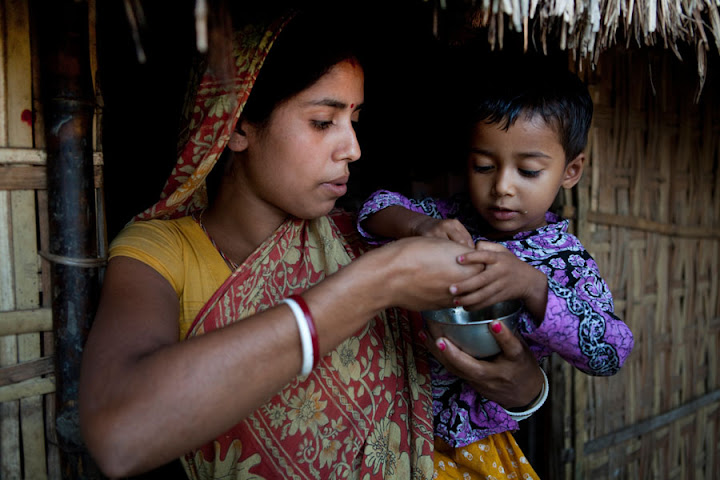
On July 11, World Population Day, while global health leaders meet in London to discuss giving greater priority to family planning, World Bank health staff in South Asia will be thinking about how to more effectively support women and families in this region to space births and avoid unwanted pregnancies.
While the countries of South Asia have made progress in increasing access to modern family planning, and reducing total fertility rates, the region still accounts for the second highest burden of maternal deaths. Poor, marginalized and uneducated households do not have access to the reproductive health services they need, including family planning.
In India, Nepal and Pakistan in particular, the differences in fertility and use of contraception across socioeconomic groups are striking: In India, the fertility rate among the wealthiest part of the population is only 1.8, while it remains 3.9 among the poorest. In Nepal, educated women have on average 1.9 children while the least educated have an average of 3.7.In Pakistan, contraceptive prevalence is 32% among wealthier couples and yet only 12% among poor couples. In the Indian state of Meghalaya, 36% of couples who want to practice family planning lack access to effective contraception.
Often there is an assumption that religion explains some of the persistently high fertility rates in Pakistan and Afghanistan, but Bangladesh, where more than 90% of the population is Muslim, and where many cultural norms are similar, has achieved 47.5% contraceptive prevalence, a total fertility rate that is at replacement level, and more equitable access to and use of family planning across all population groups.
What would make such progress possible across this diverse region? We know that investing in educating girls makes a huge difference. The World Bank's support for girls’ education in Bangladesh has had an impact well beyond improving the lives and opportunities for girls graduating from secondary school. It has delayed their age of marriage and first pregnancy to an age when they are better equipped physically to bear healthy children and with the knowledge of how to better care for their families.
One result of simply raising the age of a woman’s first pregnancy is a reduction in total lifetime fertility, even without family planning. Educated girls not only experience fewer pregnancies and thus lower risk of dying during pregnancy (Bangladesh is on track to meet MDG 5 for maternal mortality), but they also make a greater contribution to the economy.
Still, as a colleague once reminded me, even a woman with a PhD hanging over her bed needs access to family planning to space her births or reduce her fertility. Bangladesh also has the lowest unmet need for family planning in South Asia (16.8%). Making certain that families have access to voluntary family planning, and have choices of family planning methods is key.
In settings where women will not seek health care from a male provider, we need to educate and deploy more female health workers. In all settings, we need to make sure a range of modern family planning methods are accessible through public and private providers, and that both women and men receive the information they need to make informed choices about family planning.
Within our team, we’re working with counterparts to reach couples during the critical post-partum period in Afghanistan, learning from private sector involvement in reproductive health services in Bangladesh, and seeking to expand male participation in reproductive health programs in Pakistan’s Punjab Province.
Overall, we’re working to ensure that health systems in South Asia provide access to quality, affordable reproductive health care. At the same time, we’re also looking at how to more effectively engage our colleagues working on education, social protection, gender equality, and private sector development in efforts to reduce adolescent fertility rates and create incentives for families to educate their daughters, so that they will have the opportunity to both contribute to growth in South Asia and become healthy mothers of healthy families.
More
World Bank and Population and Reproductive Health


Join the Conversation